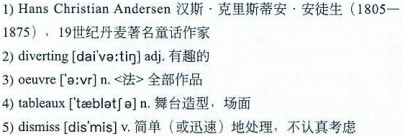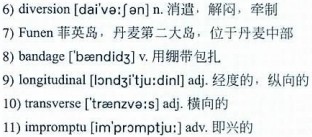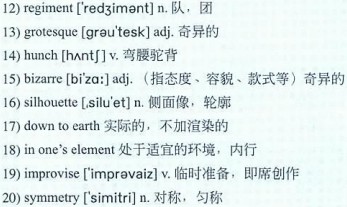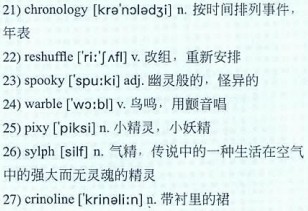在中国,安徒生是家喻户晓的“童话大王”。其实,除了童话,安徒生一生还写过六部长篇小说、七部长篇游记、五十部戏剧、上千首诗歌、上千封给亲友的信件,其中大多也是优秀的文学作品。
鲜为人知的是,他还是同代人中最受欢迎的剪纸艺术家,创作过上千件堪称奇迹的剪纸。他说过“剪纸是诗文创作的开始”,他一面剪,一面幻想一个童话故事。剪纸完成的时候,就是故事讲完的时候,而故事的高潮就是他把神秘的剪纸打开,展现它的内容。
安徒生还画过几百幅素描,拼贴过十几本精美画册。这些作品充满幻想色彩,从中可以看到安徒生思想的进步性和意识的超前性。
2005年,丹麦“安徒生诞生200周年庆典委员会”秘书长拉尔斯•西贝格新在一篇题为《安徒生:一个诗人的再生》的文章里说道:“大家应该认真地用评论的眼光来审视安徒生。他远远不止是一位童话作家。我们有一切理由来思考一下,多年来在涉及他的创作生涯与我们时代的关系方面,我们为这位童话作家画的像是不是太狭窄。孩子坐在膝上的天真的老童话作家的光辉形象应该让位给全面、人性的形象。安徒生无疑是一位世界级作家。”
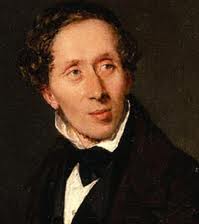 We must regard 1)Hans Christian Andersen’s paper art as something colorful, 2)diverting and poetic that is extremely closely linked to his lyric poetry, drama, fairy-tales, novels and travel books. Andersen’s paper-cuts cannot just be separated from his written 3)oeuvre and placed beside it.
We must regard 1)Hans Christian Andersen’s paper art as something colorful, 2)diverting and poetic that is extremely closely linked to his lyric poetry, drama, fairy-tales, novels and travel books. Andersen’s paper-cuts cannot just be separated from his written 3)oeuvre and placed beside it.
我们一定要把汉斯•克里斯蒂安•安徒生的剪纸艺术看成是多姿多彩、有趣和富有诗意的作品,它与他的抒情诗歌、戏剧、童话、小说和旅行书的关系异常密切。你不可能把安徒生的剪纸与他笔下的作品割裂开。
About 1,000 paper-cuts of all sizes still exist to this day—primitive figures and simple 4)tableaux, as well as more ornamental, sophisticated cuttings. They belong to a world of their own, but they all have roots in precisely the same rich, widely embracing creative imagination which, in the nineteenth century, revolutionized world literature with a long series of fairy-tales told for children and for the child in every adult. This is why Andersen’s many paper-cuts cannot be 5)dismissed as mere 6)diversions and little games, or just be regarded as funny, entertaining illustrations of Andersen’s fairy-tale world in writing.
大约有一千幅尺寸各异的安徒生剪纸留传至今,其中包括一些比较简单的图案和场景,同时也有一些装饰性更强、更为复杂的作品。这些剪纸自成一个世界,但它们都源自同一种丰富、涉及面广且具有创造性的想像力。正是这种想像力在19世纪产出了大量的童话故事,奉献给孩子们以及每个成人心底的那颗童心,从而使世界文学发生了翻天覆地的变化。也正因为如此,安徒生的许多剪纸不能被简单地认为只是消遣和小游戏,或者被仅仅看成是安徒生笔下童话世界的有趣且富娱乐性的插图。
Andersen had an urge to “cut and paste” that was just as strong as the urge to write and travel. He was nearly always armed with a pair of scissors, which could be quite dangerous. They could slip out of his pocket, and he might sit on them, which was what happened when he was on his way across the island of 7)Funen in a horse-drawn carriage, with the result that he had to have his painful backside bathed and 8)bandaged. But most of the time he grasped his scissors with pleasure, and when he folded the paper once or twice and started cutting from a 9)longitudinal or 10)transverse axis, it was always in some way a visua-lization of the way his magical wordplay emerged from nothing, and swiftly materialized itself in patterns, figures and landscapes. A paper-cut would often be a little fairy-tale in itself in time and space.
安徒生进行“剪贴”的创作欲望丝毫不弱于他写作和旅行的欲望。他几乎时刻都随身携带一把剪刀,这当然是很危险的,因为剪刀可能从他的口袋里滑出,他可能会坐到剪刀上。这种事曾经发生过,当时他正乘着马车穿越丹麦菲英岛,结果他不得不清洗并用绷带包扎自己疼痛的脊背。但多数时候,他都会兴高采烈地抓起剪刀。当他把纸折了一两褶,从纵轴或横轴开始剪的时候,就仿佛是他那富有魔力的文字作品从无到有,迅速地赋形为各种图案、影像和风景。一幅剪纸往往本身就是时空里的一个小小的童话。
Like his pen, Andersen’s scissors were a creative tool, which quite 11)impromptu could make happiness, anger, confidence, fear, hate and love assume forms and figures that almost swarmed out of him on command.
安徒生的剪刀像他的笔一样,是创作工具,很即兴地使幸福、愤怒、自信、恐惧、爱与恨这些情感在他的指挥下以图案和影像的形式跃然纸上。
Around 1830 Andersen had made some drawings for one of his faithful young friends, Otto Zinck. In one picture a 12)regiment of soldiers can be seen coming out of Andersen’s own mouth, while another profile drawing shows a group of more or less 13)grotesque, fantastic human figures, all 14)hunched up in his features and ready to jump. Later in Andersen’s life and work we can see how he developed this 15)bizarre form of self-portraiture, for example, by cutting 16)silhouettes in which people hang or dance round his nose and the top of his head, almost as if they had crawled out of his ears and mouth, or had perhaps even been blown out of his capacious nose.
1830年前后,安徒生画了一些素描送给他的一位年轻挚友奥托•齐克。在一幅画中,一队士兵正从安徒生的口中走出来。另一幅侧面像表现的是一群多多少少有些古怪离奇的人影全都在安徒生的五官上弓着腰驼着背,正准备往下跳。在安徒生的后期作品中,我们可以看到他如何发展了这种奇怪的自画像。比如说,他会剪一个侧面像,里面有人在他的鼻子周围和头顶上悬挂着或跳舞,仿佛这些小人刚从他的耳朵和嘴里爬出来,或者甚至是刚被他那极大的鼻子喷出来的。
In the nursery he would be liberal and 17)down to earth with his scissors and paper in his hands and a few chosen children around him who were neither to sit on his lap nor crawl round his shoulders, but sit at a proper distance. Then Andersen, who ever since his childhood had dreamed of becoming an actor, would be 18)in his element. When he began to turn the colored pieces of paper around the steady tips of his scissors, none of the children around the table knew what was going to happen. He liked to start by talking a little, and in doing so would incorporate an 19)improvised fairy-tale relating to the theme of the paper-cut. Frequently he would stop in order to add a new longitudinal or transverse axis on the paper so as to break the 20)symmetry and provoke new angles and perspectives. These corresponded to the devices he would employ as a storyteller, whether orally or in writing, when he started “editing” (in a filmic sense) the 21)chronology, or suddenly 22)reshuffled the composition in order to introduce new angles, scenes and persons. He was able to weep with mournful eyes, laugh at merry moments, whisper to make something 23)spooky, or sing and 24)warble, precisely as his oral narration demanded. And then all at once, when the crisp, dry clicks of the scissors ceased and Andersen’s voice fell silent, both the story and the paper-cut were finished and the piece of paper would be slowly and carefully unfolded. Perhaps Andersen would blow at it a little, and immediately a whole row of 25)pixies and 26)sylphs in short 27)crinolines would dance away from the scissors, looking like so many newly hatched little butterflies.
在托儿所里,手拿剪刀和纸的他回到了现实世界,并变得无拘无束。几名经挑选的小孩围绕着他坐着。不过他们既没有坐在他的怀里,也没有爬上他的肩头,而是离他有一段合适的距离。这个时候,自幼梦想当演员的安徒生就如鱼得水了。在他开始让彩纸在稳稳的剪刀刀尖下转动的时候,围坐在桌旁的孩子们并不知道接下来会发生什么。他喜欢在开始时说说话,这样他就可以把即兴创作的童话与剪纸的主题结合在一起。他常常会停下来,给剪纸加入新的纵轴或横轴,从而打破剪纸的对称性,引入新的角度,产生新的透视效果。而在他开始“编辑”(以剪辑电影的意识)故事的时间顺序,或者突然重新构思以便引入新的角度、场景和人物时,这些剪纸过程都与他作为故事讲述者的手法——无论口头的或是书面的——相一致。他可以准确地按照口头叙述的需要,用哀伤的眼神哭泣,在快乐的时刻开怀大笑,或是低声制造悚然的效果,或是放声歌唱,或是用颤音演唱。然后,突然间,剪刀清脆的声音停止了,安徒生也停止了讲述。在那一刻,剪纸和故事都结束了,那张纸会被小心翼翼地缓慢地打开。也许安徒生会稍稍朝剪纸吹一口气,刹那间,一整列小精灵和穿着带衬里的短裙的小气仙就像许多刚刚孵化的小蝴蝶般跳着舞离开剪刀尖。
And there they stand, sit, hang and hop to this day, all Andersen’s fairy-tale characters, in his writing and in his paper-cuts, these timeless spectators and graceful, grinning challengers to the modern world. As such, we should always accept them kindly and gratefully. They mean well. As Andersen added in a note to a paper-cut representing a “Tableau of Dancers”:
From Andersen’s scissors
A fairy-tale sprang forth.
You were given the paper-cut;
You are the kindly critic!
安徒生童话里的角色,不管是文字还是剪纸,它们或站或坐,或吊挂或跳跃,动作一直延续到今天。这些形象是现代社会永远的旁观者,同时也是现代社会优雅且在咧嘴笑着的挑战者。所以,我们应该总是友善且感激地接受他们。他们并无恶意。正如安徒生为一幅表现“舞蹈者的舞台造型”的剪纸所写的注解:
“从安徒生的剪刀下,
猛然蹦出了一个童话。
剪纸归了你,
你就是温和的评论家!”
